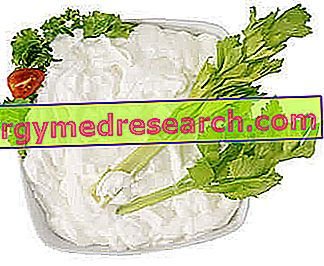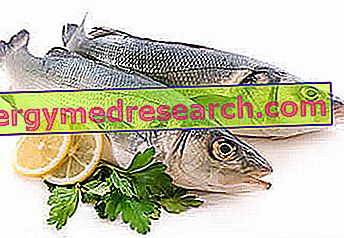Generality
Squacquerone is an Italian cheese, typical of the Emilia Romagna region. Its production is concentrated in the Romagna area (Rimini, Forlì-Cesena and Ravenna), but it is also significant in the Emilia Romagna region of the east (eastern province of Bologna).

NB : the squacquerone that does not have the "Romagna" specification can be produced in any other area of Italy.
Squacquerone is made with whole pasteurized cow's milk and belongs to the whole of raw-cheeses. Similar to the growth, it has a white mother-of-pearl color, with a softer and creamy consistency, which often does not take the form (melts).
The cheese does not show any crust or surface film. Its bouquet is sober, delicate, simple; it is sweet on the palate, almost as fresh as milk, but it is also characterized by some very evident acidulous notes (thanks to the lactic bacteria fermentation).
Originally, squacquerone was a typical cheese of the cold season. It was born at the family level, due to the urgency of using the milk produced in insufficient quantities to justify sending it to dairies. Considered a specific food of the pastoral community, the first traces of its spread in the highest social groups date back to the 19th century (bishop of Cesena).
Squacquerone is a fresh cheese . Requires storage without light, at low temperatures (refrigerator) and possibly in a sealed container. The shelf life of fresh food is limited to a few days. The packaged one has a rather short expiration date and once opened must be treated as the previous one.
Based on the classification established by INRAN and SINU, squacquerone is part of the II fundamental group of foods. Containing lactose it can be called a dairy product. From a nutritional point of view, it is above all a good source of: essential amino acids, calcium and vitamin B2 (riboflavin).
Nutritional Features
| Quantity | |
| Power | 247, 0kcal |
| Protein | 13.5g |
| Carbohydrates | 2.0g |
| Grassi | 20, 5g |
From a microbiological point of view, squacquerone is a food considered safe.
During the production cycle, it has a fairly limited risk of pathogenic bacterial contamination; moreover, being based on pasteurized milk, it is suitable for the diet of the pregnant woman.
Squacquerone has a fairly high energy intake although, compared to aged cheeses, it is decidedly less caloric.
Energy is supplied mainly by lipids, followed by proteins and finally by carbohydrates.
NB : Although some values are missing from the table, various nutritional characteristics are easily deducible.
Fatty acids are mainly saturated, peptides with a high biological value (essential fatty acids in a quantity and ratio similar to human proteins) and simple glucides (lactose).
Squacquerone contains a fair amount of cholesterol; the fibers are absent.
The most important vitamins are B2 or riboflavin and retinol equivalents or vitamin A. Small amounts of vitamin E (tocopherols) are shown. With regard to mineral salts, calcium, phosphorus and sodium concentrations stand out.
Squacquerone is one of the most suitable cheeses in the food therapy of subjects with metabolic diseases and high cardiovascular risk; hypercholesterolemics and hypertensives are particularly involved. Nevertheless, it is necessary that the consumption is sporadic and the portion size is rather reduced.
The good concentrations of calcium and phosphorus make it suitable for the growing person's diet and at high risk of osteoporosis.
Squacquerone is allowed by vegetarian philosophy but not by vegan philosophy.
It is not suitable for the diet against lactose intolerance, but has no contraindications in the case of celiac disease.
The average portion is about 80g (200kcal).
Gastronomic aspects
Squacquerone is a dairy product with a delicate flavor and aroma; it is rindless, soft and easily spreadable.
The gastronomic use of squacquerone is like a cold dish (second course), in which it is accompanied above all with raw and fresh vegetables (lettuce, rocket, radicchio, tomatoes, cucumbers, fennel, carrots, celery, etc.).
It is often used as an ingredient in sandwiches, tortillas and tigelle.
Other possible consumption methods are: melted on the dough (without heating it in the pan) and spread on the still-grilled grilled vegetables.
From an enological point of view, it goes well with white or rosé wines with a light body, less demanding and possibly autochthonous in the specific dairy production area (for example Pignoletto for the squacquerone di Castel Maggiore - Bologna).



